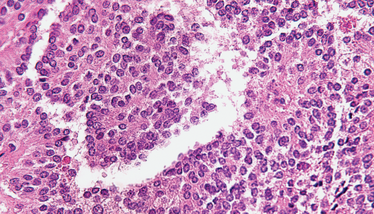ADCs Versus Solid Tumors
Drug developers place their bets on the ROR-1 antigen in the battle against solid tumors
Stephanie Vine | | 3 min read | News

Credit: Nephron, CC BY-SA 3.0, via Wikimedia Commons
Do antibody drug candidates (ADCs) have untapped potential against solid tumors? Mary Jane Hinrichs, SVP, Head of Early Development at Ipsen believes so. “When you read about ADCs you often see the words ‘excitement’ or ‘potential’ in the same sentence, and this is consistent across the global research community,” she explains. “ADCs could potentially bring a strong clinical advance to numerous solid tumor types.”
Ipsen has secured development rights for ADC STRO-003 from Sutro Biopharma in a deal that could be worth around $900 million. The drug candidate uses Sutro’s proprietary XpressCF+ platform and Beta-Glu site-specific conjugation linker technology – and targets tumor antigen ROR-1, which has also caught the interest of big pharma companies, such as Boehringer Ingelheim.
Hinrichs says, “ROR-1 antigens are present on numerous solid tumors and hematological malignancies, but there is currently no approved ADC targeting ROR-1. ROR-1 can also offer potential advantages in terms of safety profile, with low normal tissue expression minimizing potential toxicities for patients – but this will be better understood during clinical evaluation. Early data has shown strong potential for STRO-003 as a monotherapy with robust efficacy in solid tumor models and promising clinical safety profile.”
Ipsen will now be focusing on achieving proof of concept in solid tumors. Although this will be the company’s first ADC, Hinrichs says they have been watching the ADC space closely for some time – learning from the progress and challenges being seen across the industry. A recent evaluation of the ADC landscape showed that, of approximately 260 ADCs in development, only 11 are approved – reinforcing how challenging it is to strike the perfect balance to optimize all three components and create a stable ADC that can reach and act on the target cancer.
“Where the community has faced challenges is how to effectively maximize all three components of an ADC (the antibody, payload, and linker) without compromising one for the benefit of another. A promising agent may not offer optimal stability when paired with an antibody, for example,” says Hinrichs. “It’s important to remember that some challenges should also be celebrated by recognizing their scientific value – the questions they have answered and the direction they have given to shape future progress. The promise of using an antibody for targeting and combining this with a powerful cyctotoxic agent in drug development is well-documented.”
Ipsen is excited about the potential for STRO-003 because Sutro technology maintains stability of the payload and results in a highly stable molecule; moreover, the novel payload, exatecan, has shown significant potential in solid tumors.
Putting Patients at the Heart of Drug Development
By Mary Jane Hinrichs
We must all work towards the common goal to increase and enhance the number and sequence of lines of therapy when advancing our development programs. We are all working towards delivering a potential treatment that we hope will change the course of cancer for people living with this devastating disease, but we cannot underestimate the need for continuous lines of therapy. For example, we have seen PD-1 targeted treatments change the landscape for patients, but we need to ensure we drive what’s new and what’s next so there continue to be options for resistant or recurrent disease. It will be interesting to see the next disrupter to treatment sequencing, displacing PD-1 as the first-line treatment across numerous cancer types and importantly strengthening the resources clinicians have in their armory to tackle cancer.
A final reflection from me is to see how we can better harness trial design in early clinical development to explore the use of different modalities earlier in the development process to really set our goals closer to cure. The framework and regulations we are working with are currently not optimal to encourage and drive this level of bold ambition and to ensure we’re balancing risk with chances of success. I would love to see the conversation change to recalibrate our goals to be truly patient driven, increasing our aspirations to enable us to continue to deliver truly breakthrough therapies.

Making great scientific magazines isn’t just about delivering knowledge and high quality content; it’s also about packaging these in the right words to ensure that someone is truly inspired by a topic. My passion is ensuring that our authors’ expertise is presented as a seamless and enjoyable reading experience, whether in print, in digital or on social media. I’ve spent fourteen years writing and editing features for scientific and manufacturing publications, and in making this content engaging and accessible without sacrificing its scientific integrity. There is nothing better than a magazine with great content that feels great to read.



















